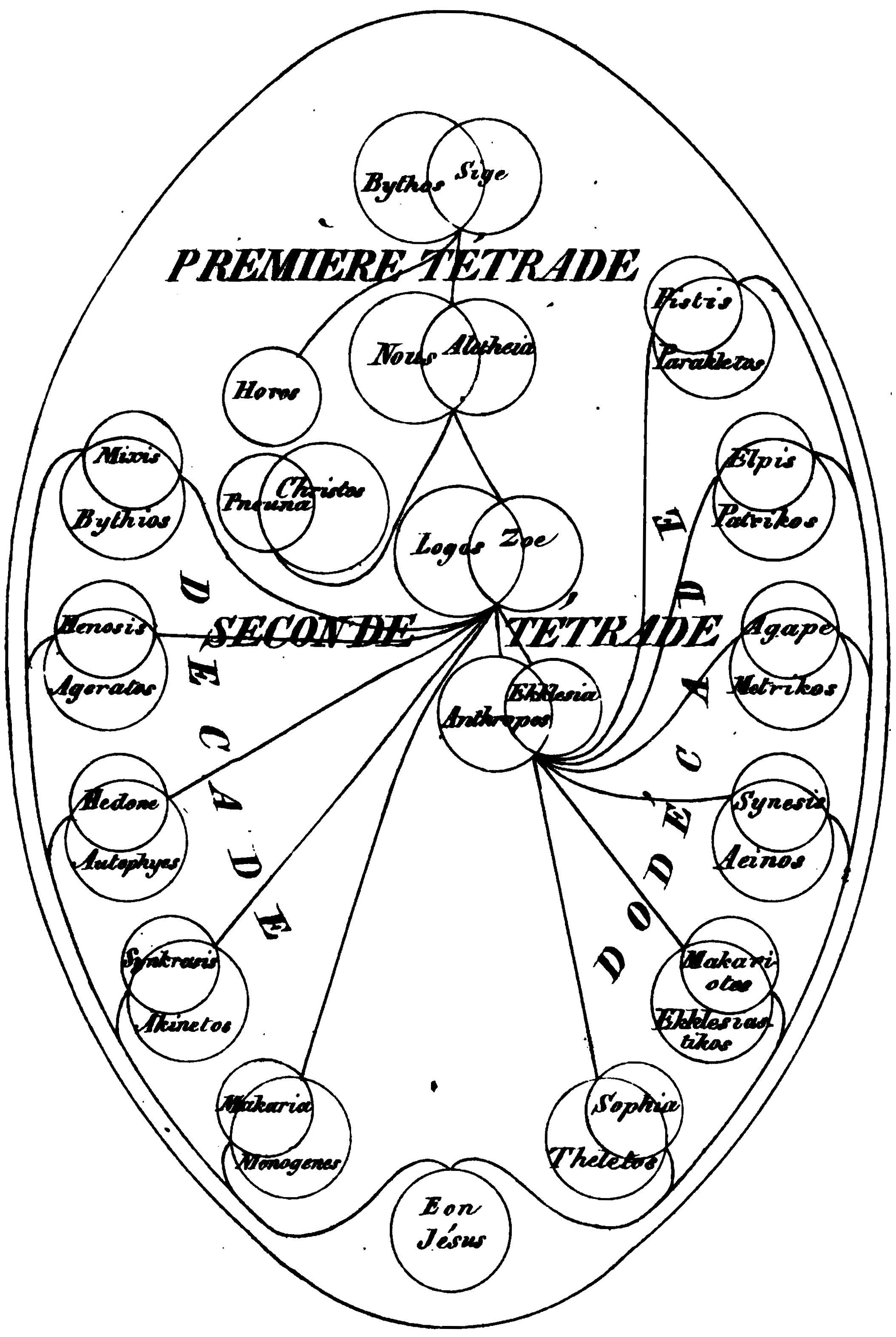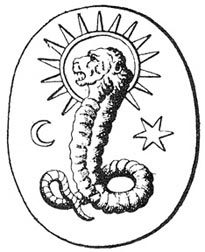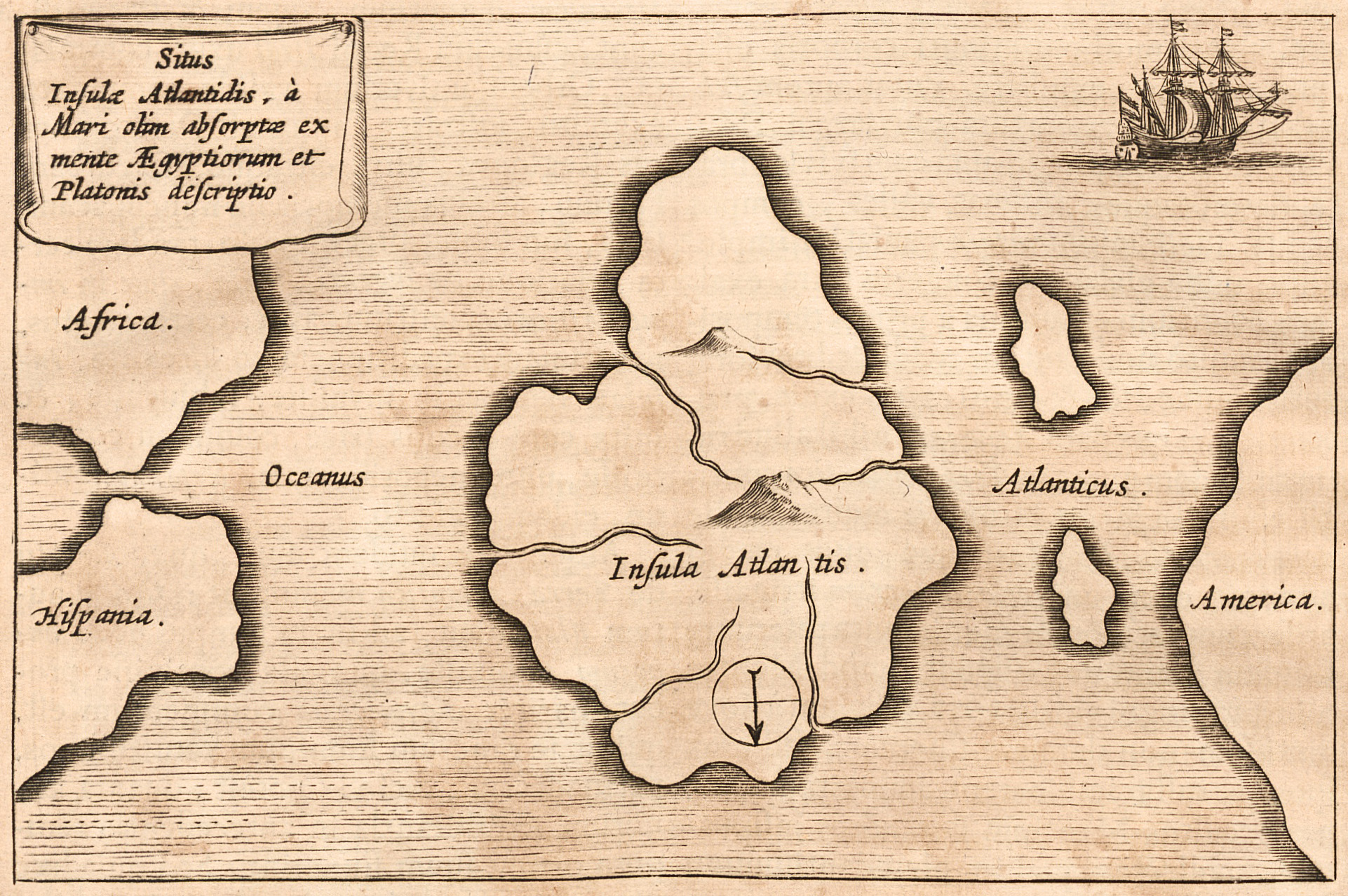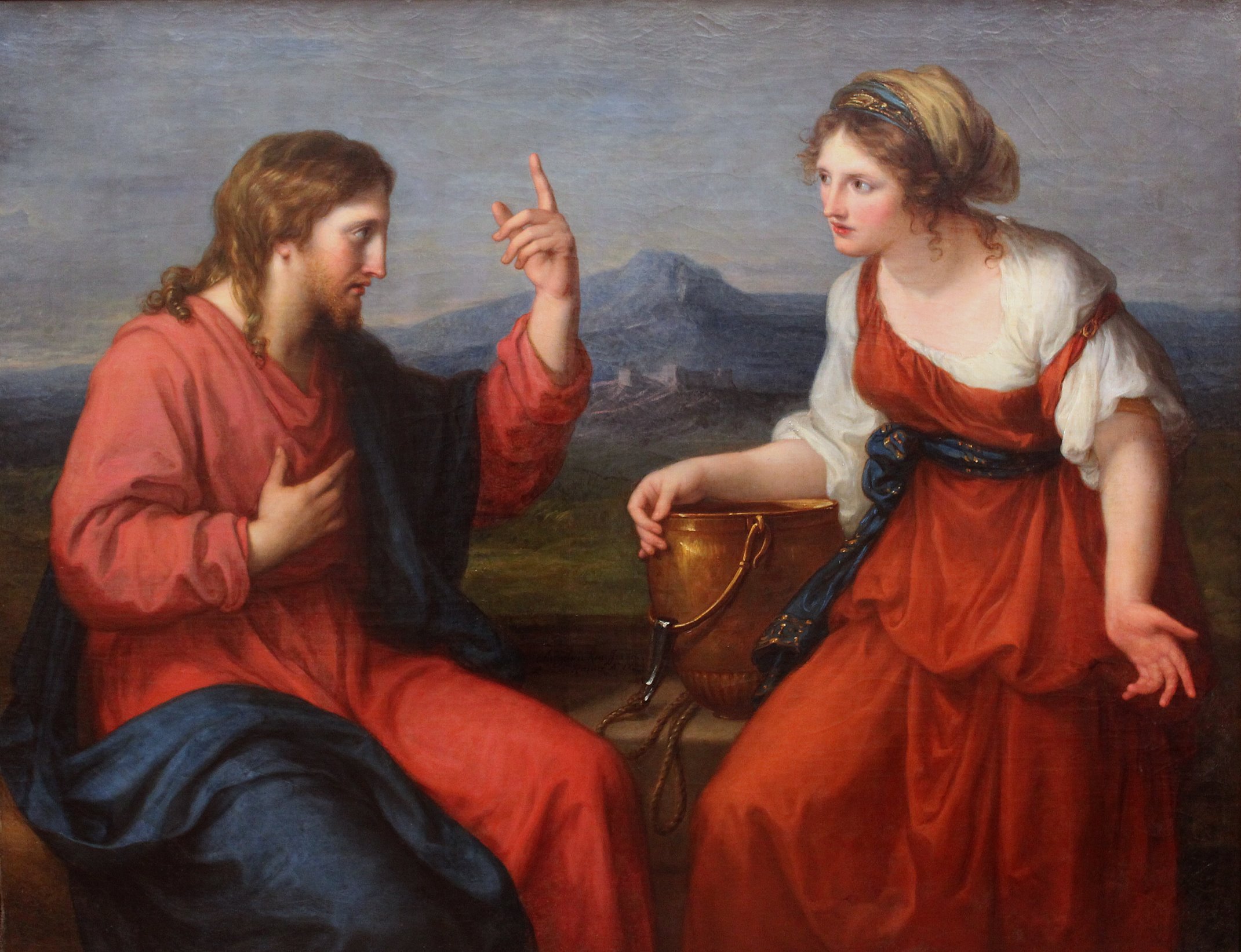|
Pleroma
Pleroma (, literally "fullness") generally refers to the totality of divine powers. It is used in Christian theological contexts, as well as in Gnosticism. The term also appears in the Epistle to the Colossians, which is traditionally attributed to Paul the Apostle. The word is used 17 times in the New Testament. Etymology The word literally means "fullness", from the verb (, "to fill"), from (Wikt:πλήρης, πλήρης, "full"). Christianity New Testament The word itself is a relative term, capable of many shades of meaning, according to the subject with which it is joined and the antithesis to which it is contrasted. It denotes the result of the action of the verb ''pleroun;'' but ''pleroun'' is either *to fill up an empty thing (''e.g.'' ), or *to complete an incomplete thing (''e.g.'' ); and the verbal substantive in -''ma'' may express either #the objective accusative after the verb, 'the thing filled or completed,' or # the cognate accusative, 'the state of ... [...More Info...] [...Related Items...] OR: [Wikipedia] [Google] [Baidu] |
Aeon (Gnosticism)
In many Gnosticism, Gnostic systems, there are various emanationism, emanations of God, who is known by such names as One, Monad (Gnosticism), Monad, ''Aion teleos'' (αἰών τέλεος "The Broadest Aeon"), Bythos (, "depth" or "profundity"), ''Arkhe'' (, "the beginning"). In Gnosticism these emanations of God are named as ''ARKHIRES'' (, "''before'' the beginning") and as Aeons (which are also often named and may be paired or grouped). In different systems these emanations are differently named, classified, and described (but emanation is common to all forms of 'Gnosticism'). In Basilidian Gnosis they are called sonships (υἱότητες ''huiotetes''; sing.: υἱότης ''huiotes''); according to Marcosians, Marcus, they are numbers and sounds; in Valentinianism they form male/female pairs called syzygies (, from σύζυγοι ''syzygoi'': lit. "yokings together"). This source of all being is an Aeon, in which an inner being dwells, known as ''Ennoea'' (, "thought, in ... [...More Info...] [...Related Items...] OR: [Wikipedia] [Google] [Baidu] |
Valentinianism
Valentinianism was one of the major Gnostic Christian movements. Founded by Valentinus ( CE – CE) in the 2nd century, its influence spread widely, not just within the Roman Empire but also from northwest Africa to Egypt through to Asia Minor and Syria in the east. Later in the movement's history, it broke into Eastern and a Western schools. The Valentinian movement remained active until the 4th century, declining after Emperor Theodosius I issued the Edict of Thessalonica in 380, which established Nicene Christianity as the state religion of the Roman Empire. No evidence exists that Valentinus was labeled a heretic during his lifetime. Irenaeus of Lyons, who was the first patristic source to describe Valentinus's teachings—though likely incompletely and with a bias toward the time's proto-orthodox Christianity—did not finish his apologetic work '' Against Heresies'' until the later 2nd century, likely sometime after Valentinus's death. The rapid growth of the Vale ... [...More Info...] [...Related Items...] OR: [Wikipedia] [Google] [Baidu] |
Heracleon
Heracleon was a Gnostic who flourished about AD 175, probably in the south of Italy. He is the author of the earliest known commentary on a book that would eventually be included in the Christian New Testament with his commentary on the Gospel of John, although only fragmentary quotes survive. He is described by Clement of Alexandria ('' Strom.'' 4.9) as the most esteemed (δοκιμώτατος) of the school of Valentinus; and, according to Origen (''Comm. in S. Joann.'' t. ii. § 8, ''Opp.'' t. iv. p. 66), said to have been in personal contact (γνώριμος) with Valentinus himself. He is barely mentioned by Irenaeus (2.4.1) and by Tertullian (''adv. Valent.'' 4). The common source of Philaster and Pseudo-Tertullian (''i.e.'' probably the earlier treatise of Hippolytus) contained an article on Heracleon between those on Ptolemaeus and Secundus, and on Marcus and Colarbasus. In his system he appears to have regarded the divine nature as a vast abyss in whose ... [...More Info...] [...Related Items...] OR: [Wikipedia] [Google] [Baidu] |
Kenoma
In Gnosticism, kenoma (''kenoma'', κένωμα) is the concept of emptiness that corresponds to the lower world of phenomena, as opposed to the concept of pleroma, or fullness, which corresponds to the Platonic world of ideal forms. Kenoma was used by the mid-2nd century Gnostic thinker and preacher Valentinius, who was among the early Christians who attempted to align Christianity with Middle Platonism. Employing a third concept of cosmos, what is manifest, Valentinian initiates could explain scripture in light of these three aspects of correlated existence. In Gnosticism The ancient Greek term for emptiness or void (''kenoma''), as pertaining to Theodotus's exegesis of Gospel of John chapter 1 verse 3, is described in ''The Excerpta ex Theodoto of Clement of Alexandria''. Hysterema Elsewhere, the usual antithesis to Pleroma is not Kenoma, but ''Hysterema'' (ὑστέρημα). As the system is reported by Hippolytus (vi. 31, p. 180) this word is used as the comple ... [...More Info...] [...Related Items...] OR: [Wikipedia] [Google] [Baidu] |
Demiurge
In the Platonic, Neopythagorean, Middle Platonic, and Neoplatonic schools of philosophy, the Demiurge () is an artisan-like figure responsible for fashioning and maintaining the physical universe. Various sects of Gnostics adopted the term ''demiurge''. Although a fashioner, the demiurge is not necessarily the same as the creator figure in the monotheistic sense, because the demiurge itself and the material from which the demiurge fashions the universe are both considered consequences of something else. Depending on the system, they may be considered either uncreated and eternal or the product of some other entity. Some of these systems are monotheistic, while others are henotheistic or polytheistic. The word ''demiurge'' is an English word derived from ''demiurgus'', a Latinised form of the Greek or . It was originally a common noun meaning "craftsman" or "artisan", but gradually came to mean "producer", and eventually "creator." The philosophical usage and the proper nou ... [...More Info...] [...Related Items...] OR: [Wikipedia] [Google] [Baidu] |
Gnosticism
Gnosticism (from Ancient Greek language, Ancient Greek: , Romanization of Ancient Greek, romanized: ''gnōstikós'', Koine Greek: Help:IPA/Greek, [ɣnostiˈkos], 'having knowledge') is a collection of religious ideas and systems that coalesced in the late 1st century AD among Early Christianity, early Christian sects. These diverse groups emphasized personal spiritual knowledge (''gnosis'') above the Proto-orthodox Christianity, proto-orthodox teachings, traditions, and authority of religious institutions. Generally, in Gnosticism, the Monad (Gnosticism), Monad is the supreme God who emanates divine beings; one, Sophia (Gnosticism), Sophia, creates the flawed demiurge who makes the material world, trapping souls until they regain divine knowledge. Consequently, Gnostics considered material existence flawed or evil, and held the principal element of salvation to be direct knowledge of the hidden divinity, attained via mystical or esoteric insight. Many Gnostic texts deal not in co ... [...More Info...] [...Related Items...] OR: [Wikipedia] [Google] [Baidu] |
Nous
''Nous'' (, ), from , is a concept from classical philosophy, sometimes equated to intellect or intelligence, for the cognitive skill, faculty of the human mind necessary for understanding what is truth, true or reality, real. Alternative English terms used in philosophy include "understanding" and "mind"; or sometimes "thought" or "reason" (in the sense of that which reasons, not the activity of reasoning). It is also often described as something equivalent to perception except that it works within the mind ("the mind's eye"). It has been suggested that the basic meaning is something like "awareness". In colloquial British English, ''nous'' also denotes "good sense", which is close to one everyday meaning it had in Ancient Greece. The ''nous'' performed a role comparable to the modern concept of intuition (philosophy), intuition. In Aristotle's philosophy, which was influential on later conceptions of the category, ''nous'' was carefully distinguished from sense perception, ... [...More Info...] [...Related Items...] OR: [Wikipedia] [Google] [Baidu] |
Nag Hammadi Library
The Nag Hammadi library (also known as the Chenoboskion Manuscripts and the Gnostic Gospels) is a collection of early Christian and Gnostic texts discovered near the Upper Egyptian town of Nag Hammadi in 1945. Thirteen leather-bound papyrus codices buried in a sealed jar were found by a local farmer named Muhammed al-Samman. The writings in these codices comprise 52 mostly Gnostic treatises, but they also include three works belonging to the '' Corpus Hermeticum'' and a partial translation/alteration of Plato's ''Republic''. In his introduction to ''The Nag Hammadi Library in English'', James Robinson suggests that these codices may have belonged to a nearby Pachomian monastery and were buried after Saint Athanasius condemned the use of non-canonical books in his Festal Letter of 367 A.D. The Pachomian hypothesis has been further expanded by Lundhaug & Jenott (2015, 2018) and further strengthened by Linjamaa (2024). In his 2024 book, Linjamaa argues that the Nag Hammadi l ... [...More Info...] [...Related Items...] OR: [Wikipedia] [Google] [Baidu] |
Philo
Philo of Alexandria (; ; ; ), also called , was a Hellenistic Jewish philosopher who lived in Alexandria, in the Roman province of Egypt. The only event in Philo's life that can be decisively dated is his representation of the Alexandrian Jews in a delegation to the Roman emperor Caligula in 40 CE following civil strife between the Jewish and Greek communities of Alexandria. Philo was a leading writer of the Hellenistic Jewish community in Alexandria, Egypt. He wrote expansively in Koine Greek on philosophy, politics, and religion in his time; specifically, he explored the connections between Greek Platonic philosophy and late Second Temple Judaism. For example, he maintained that the Greek-language Septuagint and the Jewish law still being developed by the rabbis of the period together serve as a blueprint for the pursuit of individual enlightenment. Philo's deployment of allegory to harmonize Jewish scripture, mainly the Torah, with Greek philosophy was the firs ... [...More Info...] [...Related Items...] OR: [Wikipedia] [Google] [Baidu] |
Timaeus (dialogue)
''Timaeus'' (; , ) is one of Plato's dialogues, mostly in the form of long monologues given by Critias and Timaeus, written 360 BC. The work puts forward reasoning on the possible nature of the physical world and human beings and is followed by the dialogue '' Critias''. Participants in the dialogue include Socrates, Timaeus, Hermocrates, and Critias. Some scholars believe that it is not the Critias of the Thirty Tyrants who appears in this dialogue, but his grandfather, also named Critias. At the beginning of the dialogue, the absence of another, unknown dialogue participant, present on the day before, is bemoaned. It has been suggested from some traditions— Diogenes Laertius (VIII 85) from Hermippus of Smyrna (3rd century BC) and Timon of Phlius ( 320 – 235 BC)—that ''Timaeus'' was influenced by a book about Pythagoras, written by Philolaus, although this assertion is generally considered false. Introduction The dialogue takes place the day after Socrates de ... [...More Info...] [...Related Items...] OR: [Wikipedia] [Google] [Baidu] |
Samaritan Woman At The Well
The Samaritan woman at the well is a figure from the Gospel of John. John 4:4–42 relates her conversation with Jesus at Jacob's Well near the city of Sychar. Biblical account The woman appears in : This episode takes place before the return of Jesus to Galilee. Some Jews regarded the Samaritans as foreigners and their attitude was often hostile, although they shared most beliefs, while many other Jews accepted Samaritans as either fellow Jews or as Samaritan Israelites. The two communities seem to have drifted apart in the post-exilic period. Both communities share the Pentateuch, although crucially the Samaritan Pentateuch locates the holy mountain at Mount Gerizim rather than at Mount Zion, as this incident acknowledges in John 4:20. The Gospel of John, like the Gospel of Luke, is favourable to the Samaritans throughout, and, while the Matthaean Gospel quotes Jesus at one early phase in his ministry telling his followers to not at that time evangelize any of the cit ... [...More Info...] [...Related Items...] OR: [Wikipedia] [Google] [Baidu] |







